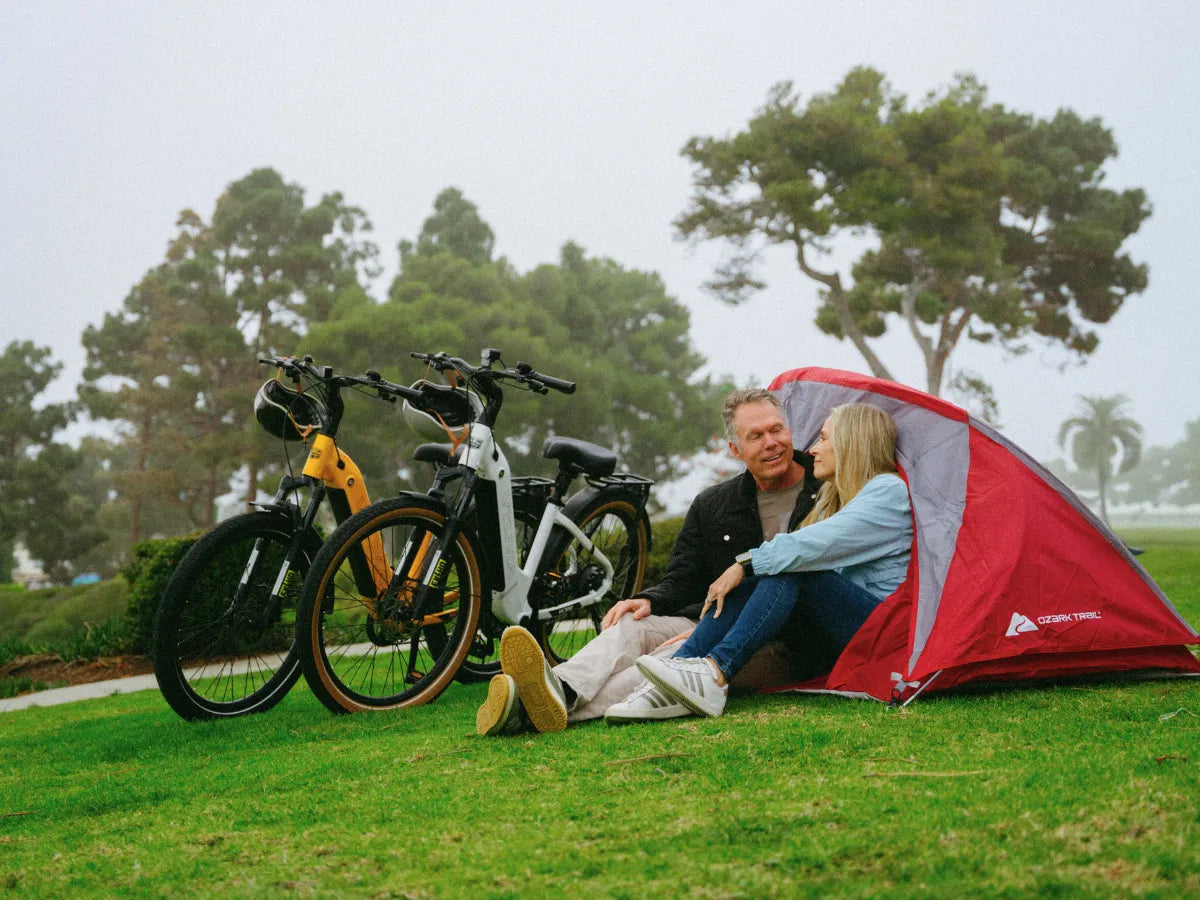Electric bikes (e-bikes) have revolutionized the way we ride, offering pedal assistance to make cycling easier, faster, and more enjoyable. One of the most critical components of an e-bike is its pedal-assist sensor, which determines how the motor responds to your pedaling. The two main types of sensors are torque sensors and cadence sensors, each offering a unique riding experience. In this guide, we’ll break down the differences between these sensors, their pros and cons, and help you decide which one is best for your needs.
What is a Cadence Sensor?
A cadence sensor is a simple yet effective system that detects whether you’re pedaling and activates the motor to assist. It measures the speed of your pedaling (in rotations per minute, or RPM) and delivers a consistent level of power based on the assistance level you’ve selected. This type of sensor is commonly found in entry-level and mid-range e-bikes.

Key Features of Cadence Sensors:
-
How It Works: Detects pedal movement and provides fixed assistance.
-
Riding Feel: Feels like the bike is "pushing" you forward, regardless of how hard you pedal.
-
Best For: Casual riders, flat terrain, and urban commuting.
Pros of Cadence Sensors:
-
Affordable: Less expensive to manufacture, making e-bikes with cadence sensors more budget-friendly.
-
Easy to Use: No need to adjust your pedaling effort; assistance is consistent and predictable.
-
Beginner-Friendly: Great for riders new to e-bikes or those who prefer a relaxed riding experience.
Cons of Cadence Sensors:
-
Less Natural Feel: Assistance isn’t tied to your pedaling force, which can feel less intuitive.
-
Inefficient Power Use: Constant assistance can drain the battery faster, especially on longer rides.
-
Limited Responsiveness: Not ideal for hilly or uneven terrain where variable assistance is needed.
What is a Torque Sensor?
A torque sensor is a more advanced system that measures the force you apply to the pedals and adjusts the motor’s assistance in real-time. This creates a more natural and responsive riding experience, as the bike feels like an extension of your pedaling power. Torque sensors are typically found in higher-end e-bikes.

Key Features of Torque Sensors:
-
How It Works: Measures pedaling force and scales motor assistance proportionally.
-
Riding Feel: Mimics the sensation of riding a traditional bike, with smooth and intuitive assistance.
-
Best For: Enthusiasts, commuters, and riders tackling varied terrain.
Pros of Torque Sensors:
-
Natural Riding Experience: Feels like riding a non-electric bike, with assistance that matches your effort.
-
Efficient Power Use: Adjusts assistance based on your input, conserving battery life and extending range.
-
Great for Varied Terrain: Ideal for hills, trails, and long-distance rides where precise control is needed.
Cons of Torque Sensors:
-
Higher Cost: More complex technology makes e-bikes with torque sensors more expensive.
-
Learning Curve: Some riders may need time to adapt to the responsive assistance.
Torque vs. Cadence Sensors: Which Should You Choose?
The choice between a torque sensor and a cadence sensor depends on your riding style, terrain, and budget. Here’s a quick guide to help you decide:
Choose a Cadence Sensor if:
-
You’re a casual rider who enjoys leisurely rides on flat terrain.
-
You want an affordable, easy-to-use e-bike with consistent assistance.
-
You don’t need advanced responsiveness or efficiency.
Choose a Torque Sensor if:
-
You want a natural, dynamic riding experience that feels like traditional cycling.
-
You frequently ride on hills, trails, or varied terrain.
-
You’re willing to invest in a higher-quality e-bike for better performance and efficiency.
Torque vs. Cadence: Terrain Suitability
| Terrain Type | Torque Sensor | Cadence Sensor |
|---|---|---|
| Flat Terrain | Works well but may feel overkill for easy rides. | Ideal for flat terrain, providing steady assistance without effort. |
| Hilly Terrain | Excellent: Adjusts assistance based on pedaling force, making climbs easier. | Less efficient: Constant assistance may feel inadequate on steep hills. |
| Off-Road/Trails | Perfect for trails: Offers precise control and responsiveness on uneven terrain. | Not ideal: Lacks the dynamic adjustment needed for technical trails. |
| Urban Commuting | Great for stop-and-go traffic: Responds quickly to changes in pedaling effort. | Suitable for urban rides, especially if you prefer consistent assistance. |
| Long-Distance Rides | Better for long rides: Efficient power use extends battery life. | Less efficient: Constant assistance may drain the battery faster. |
VTUVIA Cadence Sensor Electric Bikes For Sale:
Best Folding Electric Bike: VTUVIA SF20H

Highlights
- ✓ Speed: Class 2
- ✓ Battery range: Up to 70 miles
- ✓ Motor: 750W/Peak 1200W/ 85Nm
- ✓ Max Load: 330 lbs
- ✓ Sensor: Cadence
- ✓ Warranty: 2-Year Warranty
View more about VTUVIA SF20H
Best Off-road Adventure Cadence Electric Bike: VTUVIA Gemini

Highlights
- ✓ Speed: Class 2
- ✓ Battery range: Up to 90 miles
- ✓ Motor: 1000W/Peak 1500W/ 100Nm
- ✓ Max Load: 400 lbs
- ✓ Sensor: Cadence Sensor
- ✓ Warranty: 2-Year Warranty
View more about VTUVIA Gemini
VTUVIA Torque Sensor Electric Bikes For Sale:
Best Adventure Torque Electric Bike: VTUVIA SN100

Highlights
- ✓ Speed: Class 2
- ✓ Battery range: Up to 70 miles
- ✓ Motor: 750W/Peak 1200W/ 85Nm
- ✓ Max Load: 400 lbs
- ✓ Sensor: Torque
- ✓ Warranty: 2-Year Warranty
View more about VTUVIA SN100
Best City Commuter Torque Electric Bike: VTUVIA CMB

Highlights
- ✓ Max speed: Class 2
- ✓ Battery range: Up to 80 miles
- ✓ Motor: Mid-drive 500W/ Peak 820W 175Nm
- ✓ Max Load: 300 lbs
- ✓ Sensor: Torque
- ✓ Warranty: 2-Year Warranty
View more about VTUVIA CMB
Best Step-thru Torque Electric Bike: VTUVIA Reindeer 2.0

Highlights
- ✓ Max speed: Class 2
- ✓ Battery range: Up to 70 miles
- ✓ Motor: 750W/ 8Nm
- ✓ Max Load: 400 lbs
- ✓ Sensor: Torque
- ✓ Warranty: 2-Year Warranty
View more about VTUVIA Reindeer 2.0
Conclusion: Which Sensor is Right for You?
Both torque and cadence sensors have their strengths, and the best choice depends on your riding preferences and needs. If you’re looking for a budget-friendly e-bike for casual rides on flat terrain, a cadence sensor is a great option. However, if you want a more natural, responsive ride and frequently tackle hills or long distances, a torque sensor is worth the investment.
By understanding the differences between these sensors, you can make an informed decision and choose the e-bike that will enhance your riding experience. Whether you’re a casual rider or a cycling enthusiast, the right pedal-assist technology can make all the difference. Happy riding! 🚴♂️





Share:
How to Ride an Electric Bike: A Complete Guide for Beginners
Electric Bike Accessories: Must-Have Gadgets and Gear